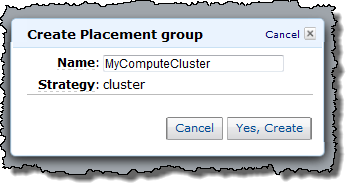Open Cloud Consortium Announces First Integrated Set of Cloud Services for Researchers Working with Big Data
I just could not bring myself to use the original title for the post.
BTW, I mis-read the service to be named: “Turkey.” Maybe that is how it is pronounced?
Service for researchers, described as:
Today, the Open Cloud Consortium (OCC) announced the availability of Tukey, which is an innovative integrated set of cloud services designed specifically to enable scientific researchers to manage, analyze and make discoveries with big data.
Several public cloud service providers provide resources for individual scientists and small research groups, and large research groups can build their own dedicated infrastructure for big data. However,currently, there is no cloud service provider that is focused on providing services to projects that must work with big data, but are not large enough to build their own dedicated clouds.
Tukey is the first set of integrated cloud services to fill this niche.
Tukey was developed by the Open Cloud Consortium, a not-for-profit multi-organizational partnership. Many scientific projects are more comfortable hosting their data with a not-for-profit organization than with a commercial cloud service provider.
Cloud Service Providers (CSP) that are focused on meeting the needs of the research community are beginning to be called Science Cloud Service Providers or Sci CSPs (pronounced psi-sip). Cloud Service Providers serving the scientific community must support the long term archiving of data, large data flows so that large datasets can be easily imported and exported, parallel processing frameworks for analyzing large datasets, and high end computing.
“The Open Cloud Consortium is one of the first examples of an innovative resource that is being called a Science Cloud Service Provider or Sci CSP,” says Robert Grossman, Director of the Open Cloud Consortium. “Tukey makes it easy for scientific research projects to manage, analyze and share big data, something this is quite difficult to do with the services from commercial Cloud Service Providers.”
The beta version of Tukey is being used by several research projects, including: the Matsu Project, which hosts over two years of data from NASA’s EO-1 satellite; Bionimbus, which is a system for managing, analyzing, and sharing large genomic datasets; and bookworm, which is an applications that extracts patterns from large collections of books.
The services include: hosting large public scientific datasets; standard installations of the open source OpenStack and Eucalyptus systems, which provide instant on demand computing infrastructure; standard installations of the open source Hadoop system, which is the most popular platform for processing big data; standard installations of UDT, which is a protocol for transporting large datasets; and a variety of domain specific applications.
It isn’t clear to me what short-comings of commercial cloud providers are being addressed?
Many researchers can’t build their own clouds but with commercial cloud providers, why would you want to?
Or take the claim:
“Tukey makes it easy for scientific research projects to manage, analyze and share big data, something this is quite difficult to do with the services from commercial Cloud Service Providers.”
How so? What prevents this with commercial cloud providers? Being on different clouds? But Tukey “corrects” this by requiring membership on its cloud. How is that any better?
Nothing against Tukey but I think being a non-profit isn’t enough of a justification for yet another cloud. What else makes it different from other clouds?
Clouds are important for topic maps as semantics will collide in clouds and making meaningful semantics rain from clouds is going to require topic maps or something quite similar.
